[Made-In]
Artist: XULA
2050
MDF, Mycelium [hemp], Agar-Agar, Spirulina, Citric Acid, Cornstarch, Aluminum, Paint.
100cm x 60cm x 52cm.
Created for Share Festival XIX, “Tomorrow Now: The art of 2050 AD.” Milan.
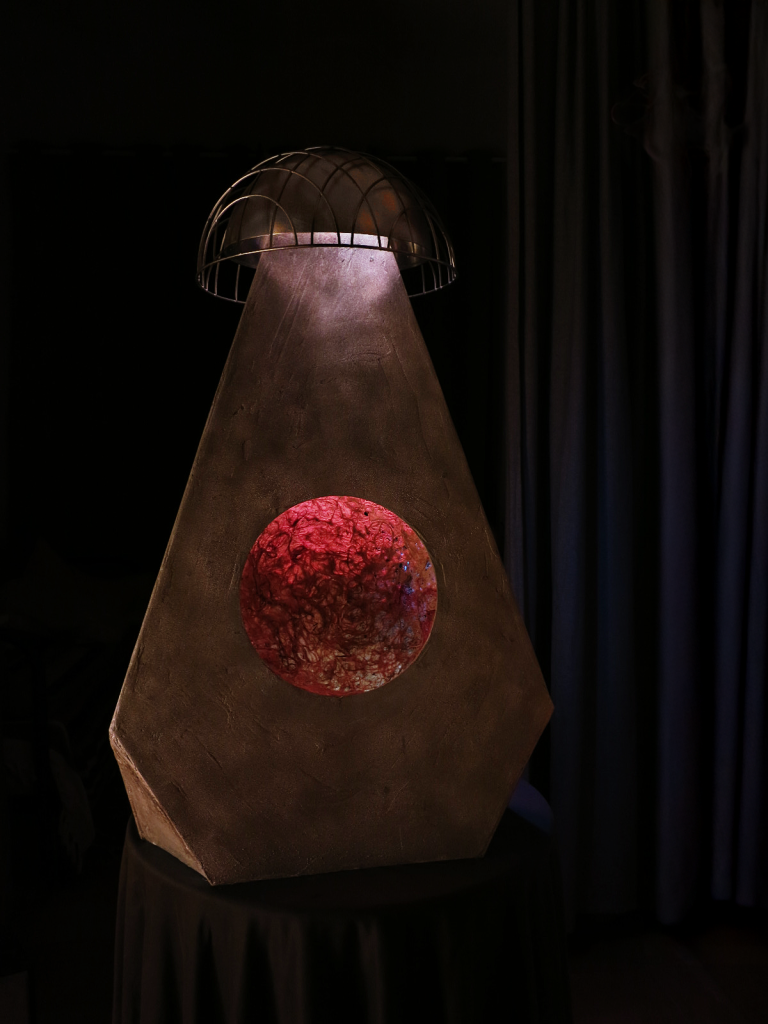
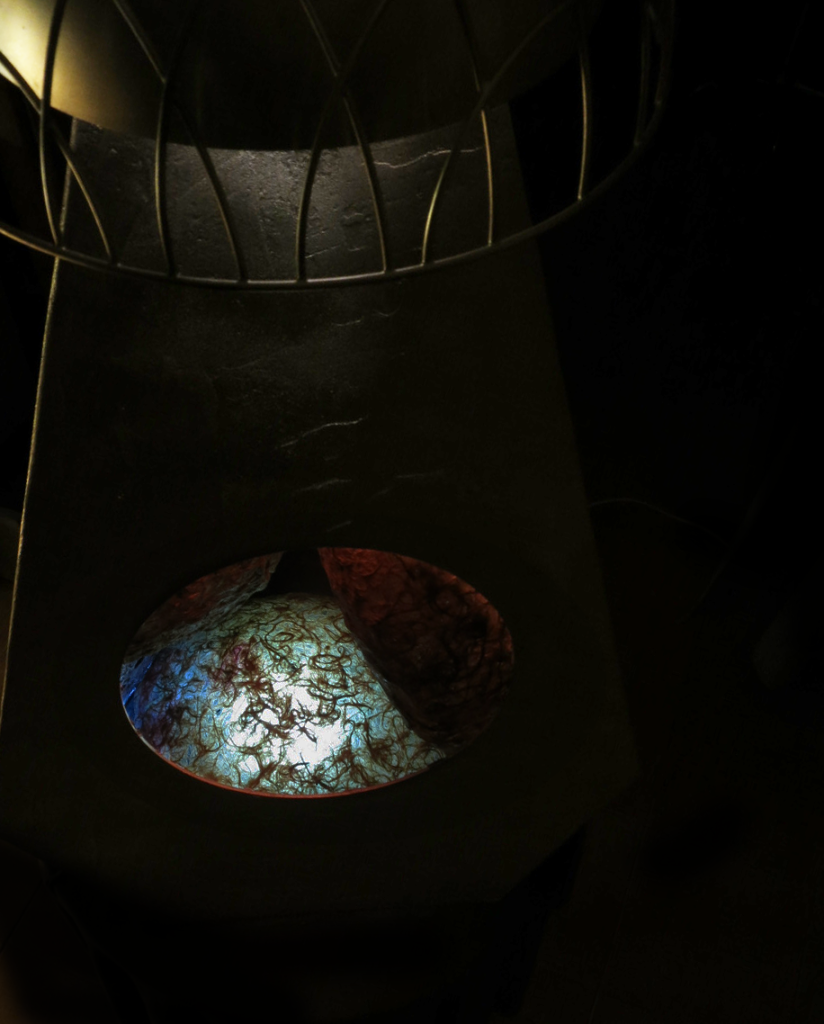
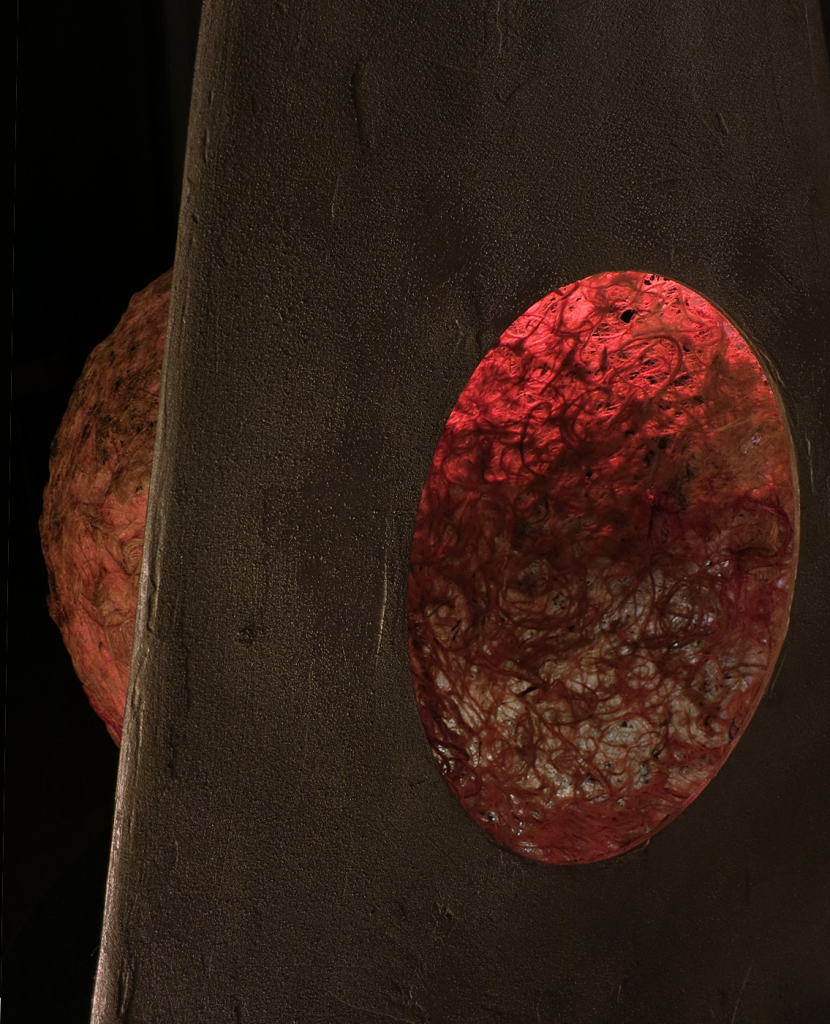
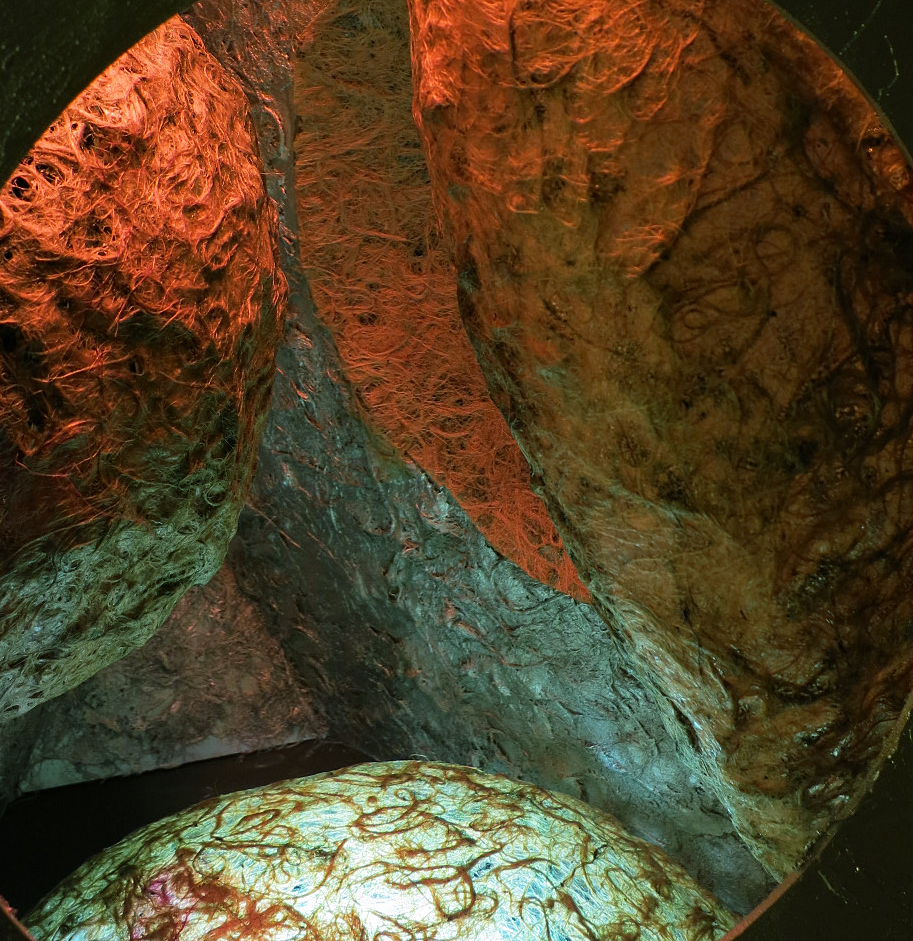
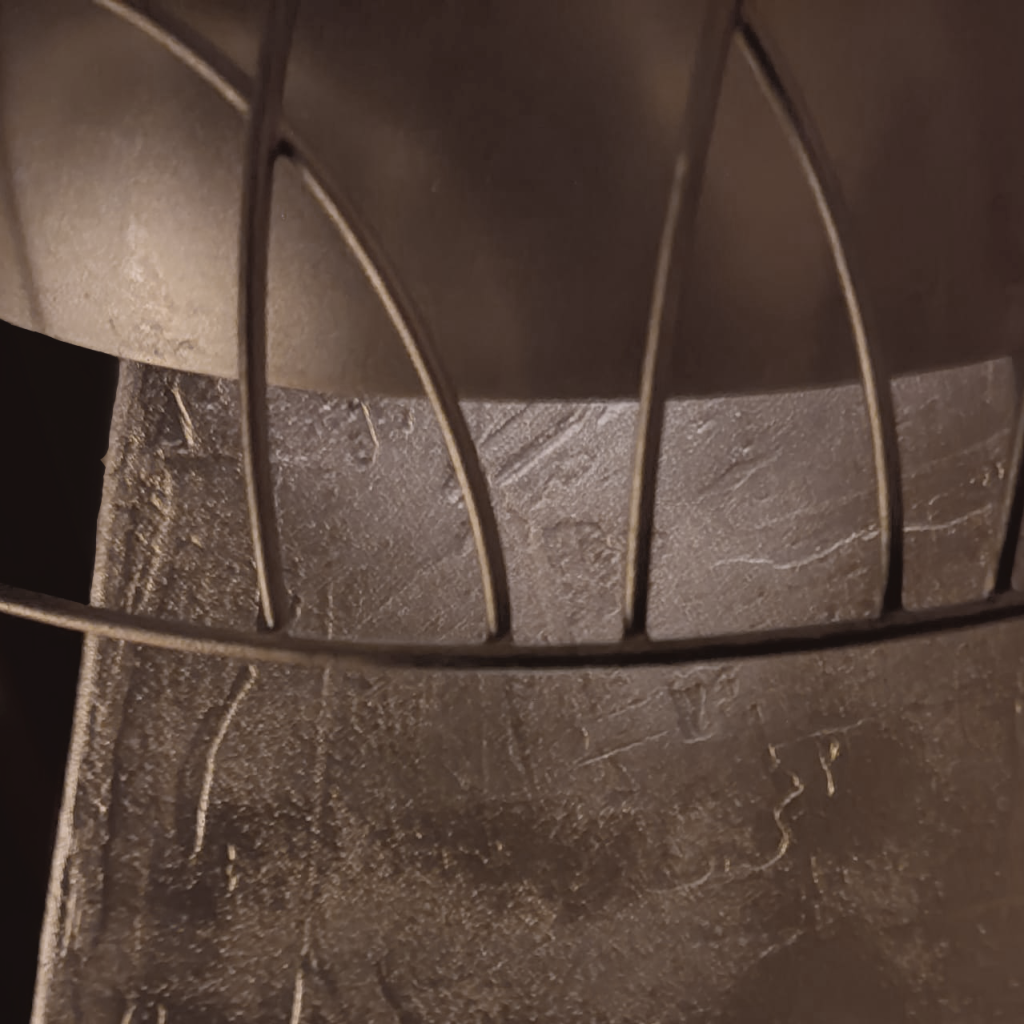
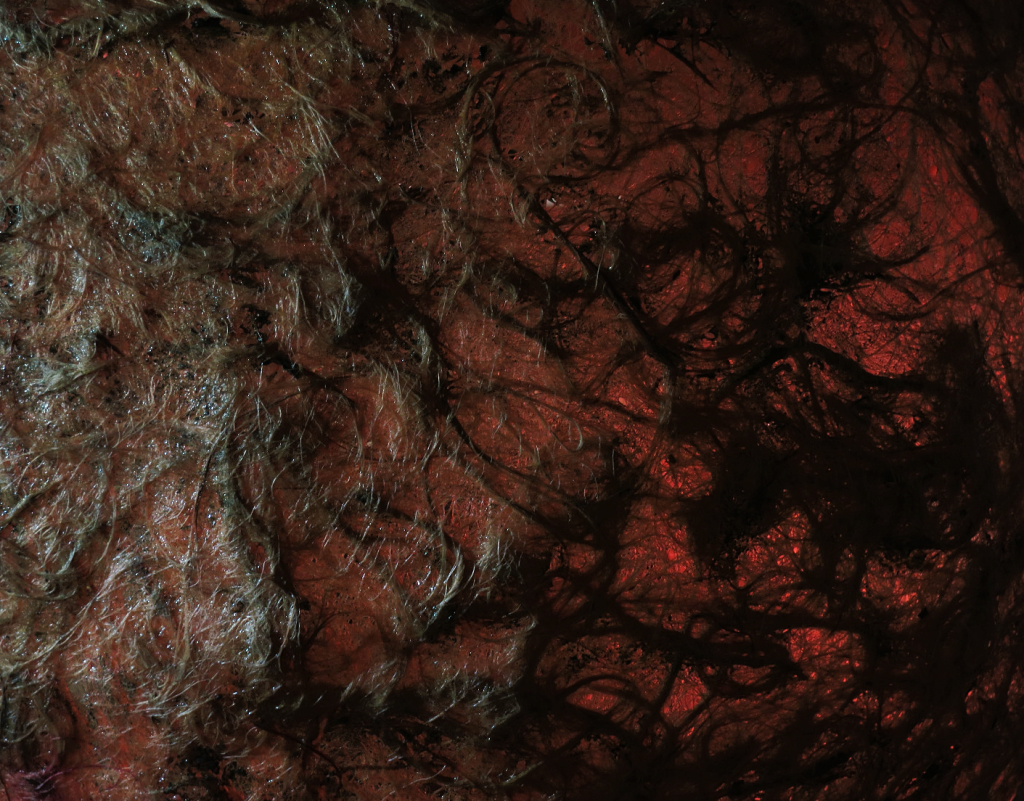
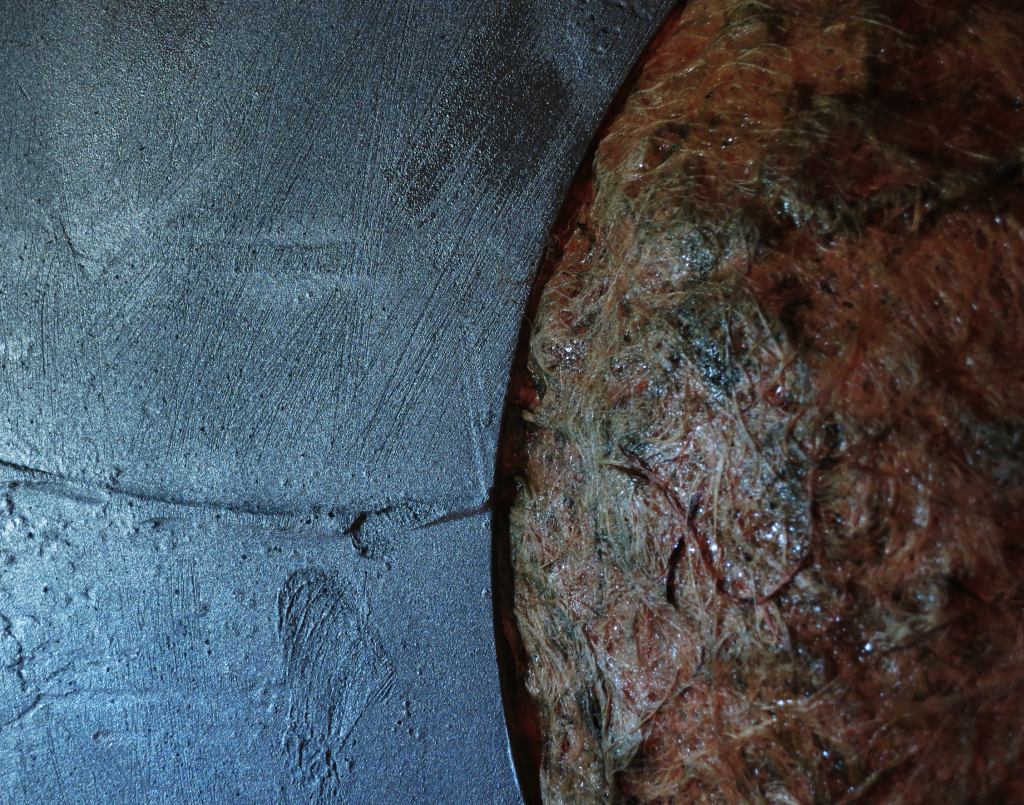
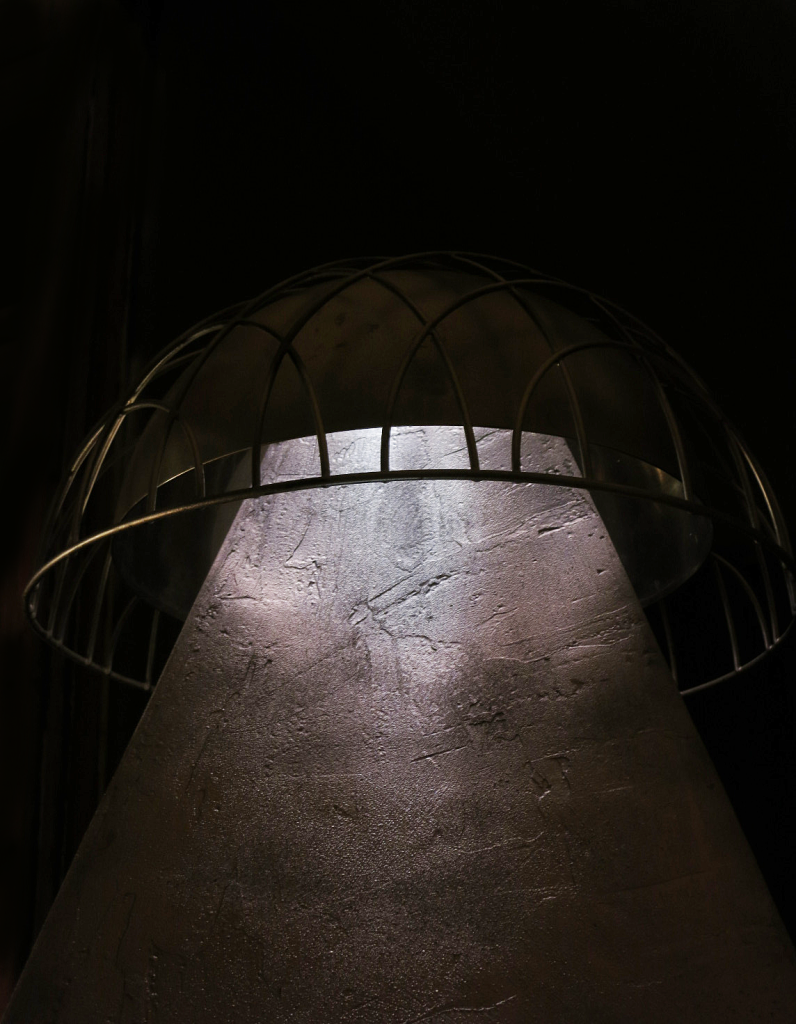
Maiden is an artistic repurposing of dead organic material from a failed biotech experiment in the development of extracorporeal human gestation.
Each of the sculpture’s three faces features a piece of preserved membrane from a collapsed tripartite colony, a trinity representing the three lifeforms present: algae, mycelium, and the [once] fetal test subject – an embryonic chimpanzee.
Maiden re-embodies these former “wombs” into a simple feminine form whose exterior metallic casings imitate modern laboratory gestation machinery, while the interior is nestlike, cocooning, and tender. One might note that the shape also recalls the fruit of mycelia, the mushroom.
Background
While today it is common procedure for first trimester fetuses to be transferred to laboratory-grade stainless steel reservoirs to complete gestation, especially in zones affected by the Baltic Sea Incident, neonatal purification technology developed in fits and starts throughout the 2030s and 2040s. The Karolinska Institute in Stockholm, Sweden, is credited as having developed the first successful amniotic tank incubation system, though babies delivered through the program suffered pcychiatric abnormalities and failed to reach typical developmental milestones like smiling and speaking. Nonetheless, it marked a great achievement with a 5 year survival rate of 71%, nearly tripling that of traditional gestation births at the time.
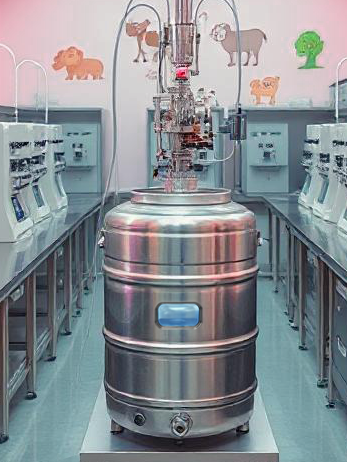
It would take the better part of a decade before neonatal chemists discovered that they could gently improve a baby’s postnatal success in social markers by pumping high doses of serotonin, oxytocin, fluoxetine, and cortisol directly into the infant’s spine, which is now standard practice. If you are under the age of 9 years old right now, it’s very likely how you were born! That’s also why it’s important to never skip a dose of your vitamins.
A Secret Experiment.
In the interim, an experimental Spanish biomedical research film, codenamed LAMB (Laboratori d’Arts de Maduració Barcelona), developed a radical departure from standard gestational care, the nature of which raised legal and ethical questions that limited the group’s funding to a small circle of private donors.
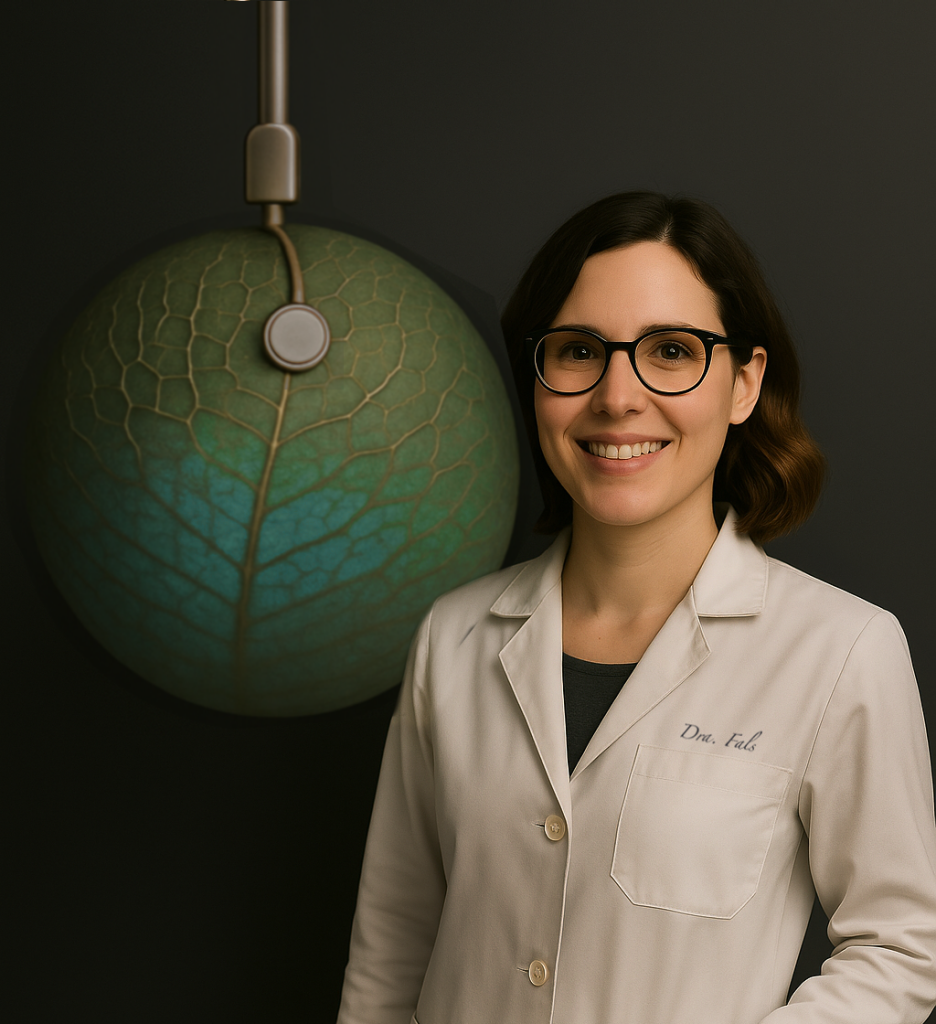
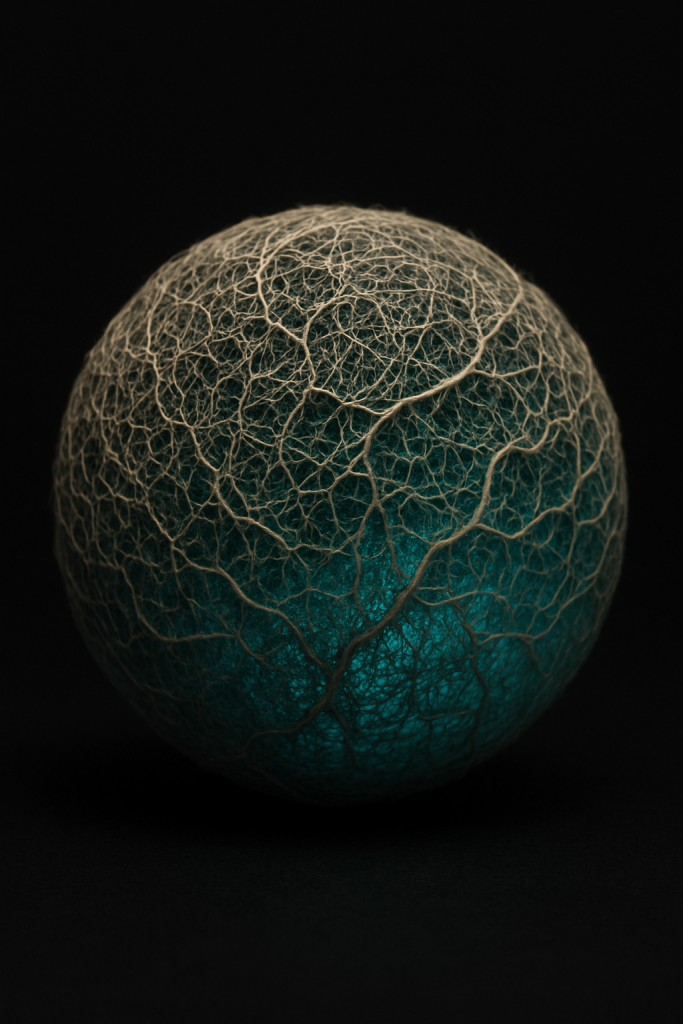
Left: LAMB creator Dr. Meritxell Fals with an early prototype.
Right: a healthy specimen before the insertion of a fetal chimp.
LAMB scientists wanted to create a proprietary, living biome both capable of sustaining fetal life, in addition to decontaminating its nascent tissue from toxins passed from accumulations in the mother. Inspired by symbiotic relationships found in lichens, each “womb” was composed of an embryonic sac within a hybrid biomaterial membrane made of red and blue algae and mycelia. It was believed that through algal remediation, the algae could sequester harmful contaminants, while the mycelium could further provide structure, stasis, fluid retention, and micro-mediation. In a final step, DNA from the gestating parent subject was infused within an artificial amniotic fluid to ease the transfer process.
Problems arose in early testing when it appeared that the fetal chimps used in the experiment appeared to develop a third, tripartite symbiosis with the two host organisms. The unfortunate result of this syntropic arrangement was a rapid growth cycle within the network that resulted in an interdependency; neither the chimps nor the ecosystem could survive once extracted from one another.
Subsequent autopsies discovered coalescence between mycelial hyphae and the chimpanzees’ vascular systems, and oxygen producing algal colonies embedded in lung tissue. In a way, the experiment went too well; each of the life forms exchanged in a mutually beneficial relationship that catalyzed their success, paradoxically negating their designed purpose. The project was immediately shut down. The scientists were concerned that the findings raised existential questions about the nature of autonomy, while the financial backers feared legal repercussions arising from the grey area in which they were operating. All parties were effectively silenced through paperwork, and the project never came to light.
This piece, Maiden (Made-In), contains the last biological traces of this anomalous experiment, which arrived anonymously on the artist’s doorstep along with documents and evidence of their provenance.
Now, the dead physical tissue of this once life sustaining system has been re-embodied by the artist in a feminine-like form, also reminiscent of the humble mushroom – fruit of a mycelium network. These days, the sight of a swollen pregnant belly is largely relegated to history books, or smuggled out in news from The Confederacy of Great States of America. Now that the last generation of fleshborn are nearing adulthood, with virtually no probability of unaided fertility and gestation, the artist asks us to remember, like gods, we were once also capable live-giving beings.
About the artist

The mononymous artist XULA is known for her works that critique failed technologies, often with the help of whistleblowers (as was the case here.) Other works include Bad Moon Rising, a sculpture garden of debris recovered from the 2018-2036 “Billionaire Space Race,” and NOTHING TO SEE: HEAR, a one act play about the smart device that rendered basic literacy irrelevant.